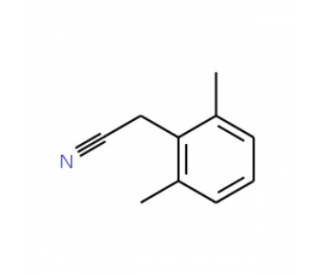详细说明
Species Reactivity
Human
Specificity
Detects human Meprin alpha Subunit/MEP1A in direct ELISAs and Western blots. In direct ELISAs and Western blots, no cross-reactivity with recombinant human MEP1B or recombinant mouse MEP1A is observed.
Source
Monoclonal Mouse IgG 2B Clone # 364312
Purification
Protein A or G purified from hybridoma culture supernatant
Immunogen
Mouse myeloma cell line NS0-derived recombinant human Meprin alpha Subunit/MEP1A
Val22-Gln601
Accession # AAA21338Formulation
Lyophilized from a 0.2 μm filtered solution in PBS with Trehalose. *Small pack size (SP) is supplied as a 0.2 µm filtered solution in PBS.
Label
Unconjugated
Applications
Recommended
ConcentrationSample
Western Blot
1 µg/mL
Recombinant Human Meprin alpha Subunit/MEP1A (Catalog # )
Immunoprecipitation
25 µg/mL
Conditioned cell culture medium spiked with Recombinant Human Meprin alpha Subunit/MEP1A (Catalog # ),
CyTOF-ready
Ready to be labeled using established conjugation methods. No BSA or other carrier proteins that could interfere with conjugation.
Intracellular Staining by Flow Cytometry
2.5 µg/10 6 cells
HEK293 human embryonic kidney cell line fixed with paraformaldehyde and permeabilized with saponin
Please Note: Optimal dilutions should be determined by each laboratory for each application. are available in the Technical Information section on our website.
Preparation and Storage
Reconstitution
Reconstitute at 0.5 mg/mL in sterile PBS.
Shipping
The product is shipped at ambient temperature. Upon receipt, store it immediately at the temperature recommended below. *Small pack size (SP) is shipped with polar packs. Upon receipt, store it immediately at -20 to -70 °C
Stability & Storage
Use a manual defrost freezer and avoid repeated freeze-thaw cycles.
12 months from date of receipt, -20 to -70 °C as supplied.
1 month, 2 to 8 °C under sterile conditions after reconstitution.
6 months, -20 to -70 °C under sterile conditions after reconstitution.
Background: Meprin alpha Subunit/MEP1A
Meprins are multimeric proteases composed of alpha and beta subunits, which are members of the astacin family of zinc endopeptidases (1, 2). Both subunits form disulfide‑linked homo- or heterooligomers, which are also referred to as Meprin A (composed of alpha subunits with or without beta subunits) and Meprin B (composed of beta subunits only) (3). Although the two subunits share 42% identity in their amino acid (aa) sequence, they differ significantly in their oligomeric structure, post-translational processing and subsequently cellular location, and substrate and peptide bond specificity (4). Human Meprin alpha subunit consists of a signal peptide (aa 1 to 21), a pro region (aa 22 to 65), and a mature chain (aa 66 to 746) containing the following domains: catalytic (aa 62 to 263), MAM (aa 264 to 433), MATH (aa 434 to 593), EGF-like (aa 670 to 710), transmembrane (aa 713 to 740), and cytoplasmic (aa 741 to 746).
References:
Bond, J.S. and Beynon, R.J. (1995) Protein Sci. 4:1247.
Stocker, W. et al. (1995) Protein Sci. 4:823.
Bertenshaw, G.P., et al. (2001) J. Biol. Chem. 276:13248.
Ishmael, F.T. et al. (2005) J. Biol. Chem. 280:13895.
Entrez Gene IDs:
4224 (Human); 17287 (Mouse); 25684 (Rat)
Alternate Names:
bA268F1.1 (meprin A alpha (PABA peptide hydrolase)); EC 3.4.24; EC 3.4.24.18; endopeptidase-2; MEP1A; meprin A subunit alpha; meprin A, alpha (PABA peptide hydrolase); Meprin alpha Subunit; N-benzoyl-L-tyrosyl-P-amino-benzoic acid hydrolase subunit alpha; PABA peptide hydrolase; PPH alpha; PPHA











 粤公网安备44196802000105号
粤公网安备44196802000105号